Lubaina Himid’s Print Symposium
I wanted to share with you all a behind-the-scenes tour of a talk I did at the Harris Museum. The subject of the talk was my project with Heather Ross, The Caravan Press for Lubaina Himid’s Print Symposium. I won’t bore you with the details of the talk, the outline of which is described in the links, rather I’d like to describe the very exciting time our entourage from Bradford had in the illustrious city of Preston, home to a great many things including very recently Gwyneth’s press; Artist, long-term resident and Turner Prize winner Lubaina Himid; UCLan’s Artlab, and my wonderful colleague Heather Ross.
Firstly, a bit of background to why I came to talk about the Caravan Press in the Harris. Officially our Heritage Lottery Grant funded Caravan Press Project had successfully concluded in October 2017. We had done what we set out to do – collecting family testimonies; restoring the printing blocks and the press; re-printing 59 of Gwyneth’s prints; and sharing all of this with the local community and wider public. You can read all about that on the Typooo North Website. Typooo North is the organisation that Heather and I set-up to deliver the project and to continue to honour Gwyneth Albans legacy.
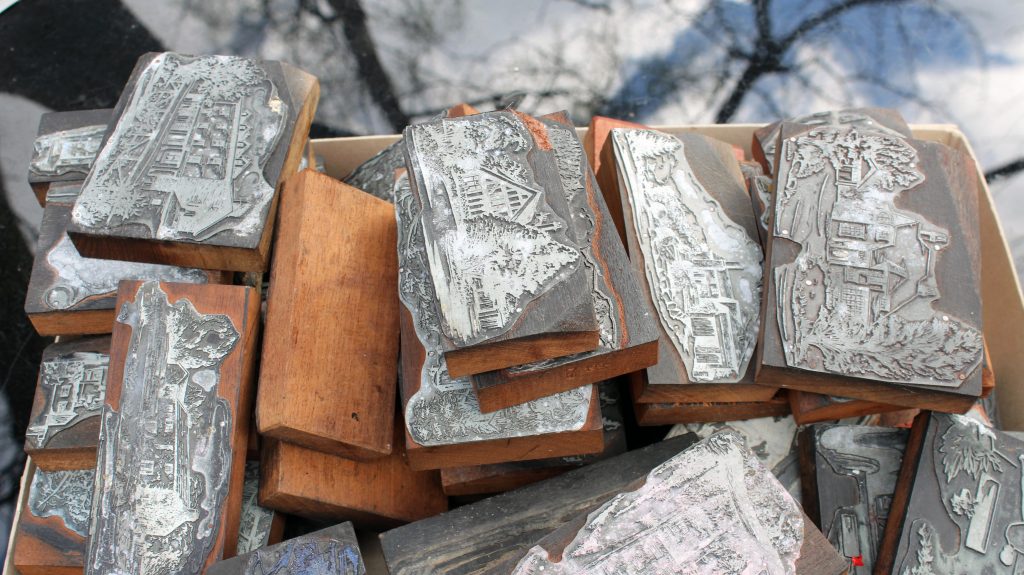
So we had concluded the project, the archive was established and Heather and I got quickly absorbed into other projects. At the back of both of our minds though was probably a number of conversations we’d had over the course of 2017 – what was the next step with the archive? We had always hoped, and as artists, had sought for something more to be done with the archive, interpretations of the archival material. This was almost our mantra during the project, ‘making visible’ meant bringing to light and breathing new life into Gwyneth’s legacy.
With all these ideas lurking around in the backs of our busy minds it was a great surprise when Lubaina Himid should call. Fresh from winning the Turner Prize, deservedly and of merit in its own right. However I think 2017 captured the imagination of the public more this year as it was the first year, since an upper age limit of 50 was dropped, for someone of 66 to win the prize. The press does a good job of backpeddaling and attempting to recover its reputation having criminally under-represented Lubaina’s work until now and here is an example of that.
Lubaina wanted to know if we wanted to talk about The Caravan Press, because Gwyneth’s Albans story, as a woman with an underrepresented history was of particular interest to her. No doubt Lubiana was aware of our work anyway, as a colleague of Heathers at the wonderful printing facilities of UClan, Artlab. More importantly, she had a project in mind, to put together seven international women artists who would interpret Gwyneth’s archive. Of course we were both delighted that more people should get a chance to hear about Gwyneth Alban, and that Lubaina had articulated such a vision for the future of the archive.
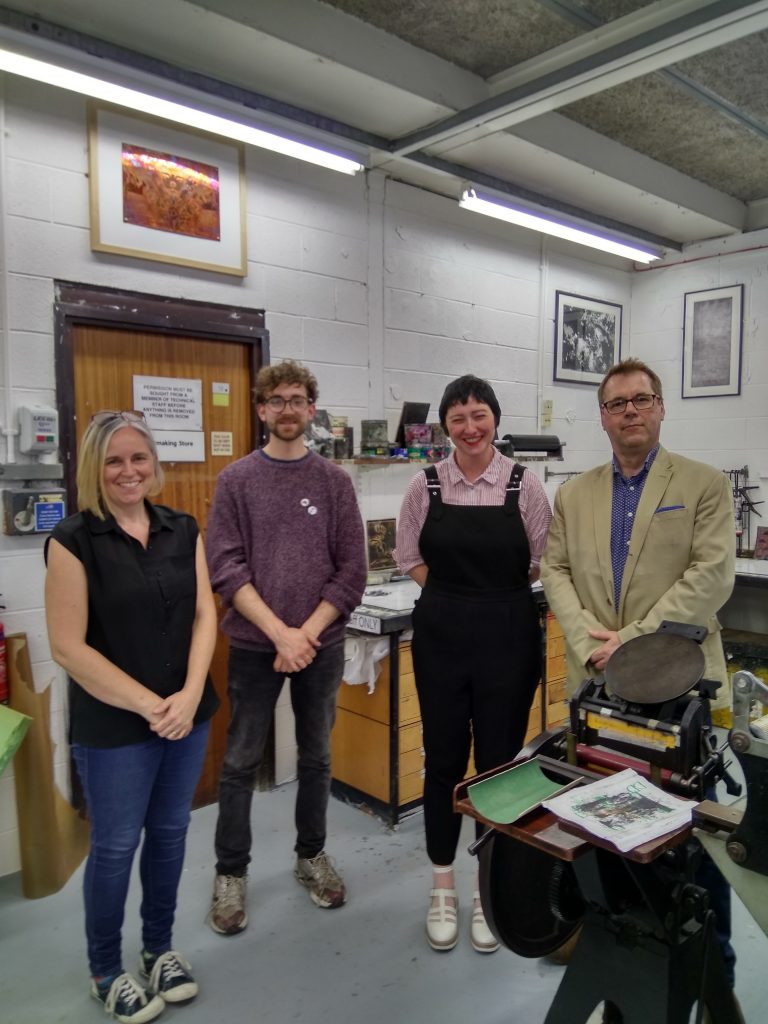
The relocation of the press and archive and Lubaina’s vision of an international women print-makers collaboration now had the practical support it needed with an exemplary team of print-makers, technicians and academics at Artlab. I was very moved when Bill and Marriance arrived ahead of the Harris talk to find Gwyneth’s press in its new home, slightly dwarfed perhaps among Artlabs huge intaglio presses, but nonetheless establishing a spot which no doubt will be well worn as students discover it there.
Once the excitement of the press ‘opening’ had worn off I was free to exlore the city a little first, before my pals from Bradford arrived. I’d booked an AirBnB for the weekend, ‘luxury’ student accommodation repurposed for the summer months. I’d found the AirBnB quite easily from the city centre and unbeknownst to me at the time was close to an exciting street full of delights called Plungington Road. Later on that day, once my pals had arrived, we would find our home away from home, RK Sweets. A delicious South Indian Cafe, very popular with the locals and offering a smorgasbords of savoury and sweet. We ate more than we dare then took more away in case for some reason they might suddenly decide to shut up shop and never sell that fried Patra dish again!
The next day, talk day, I arrived to a festival atmosphere in the city Centre. There were rumours flying that Mel B was DJing somewhere, and Gok Wan had set-up stall in front of the Harris Museum, berating people for being fat or “crazy”. A dinner-time parched peas set the scene nicely and was much need fuel for the afternoon. The talk itself went very well, set within a grand room of the Harris which at first appears austere, imposing, but very quickly turns to welcoming. With Lubaina’s curated collection of women artists up the stairway, and her own vibrant exhibitionc on the first floor, the Harris was as warm a welcome as you’d want.
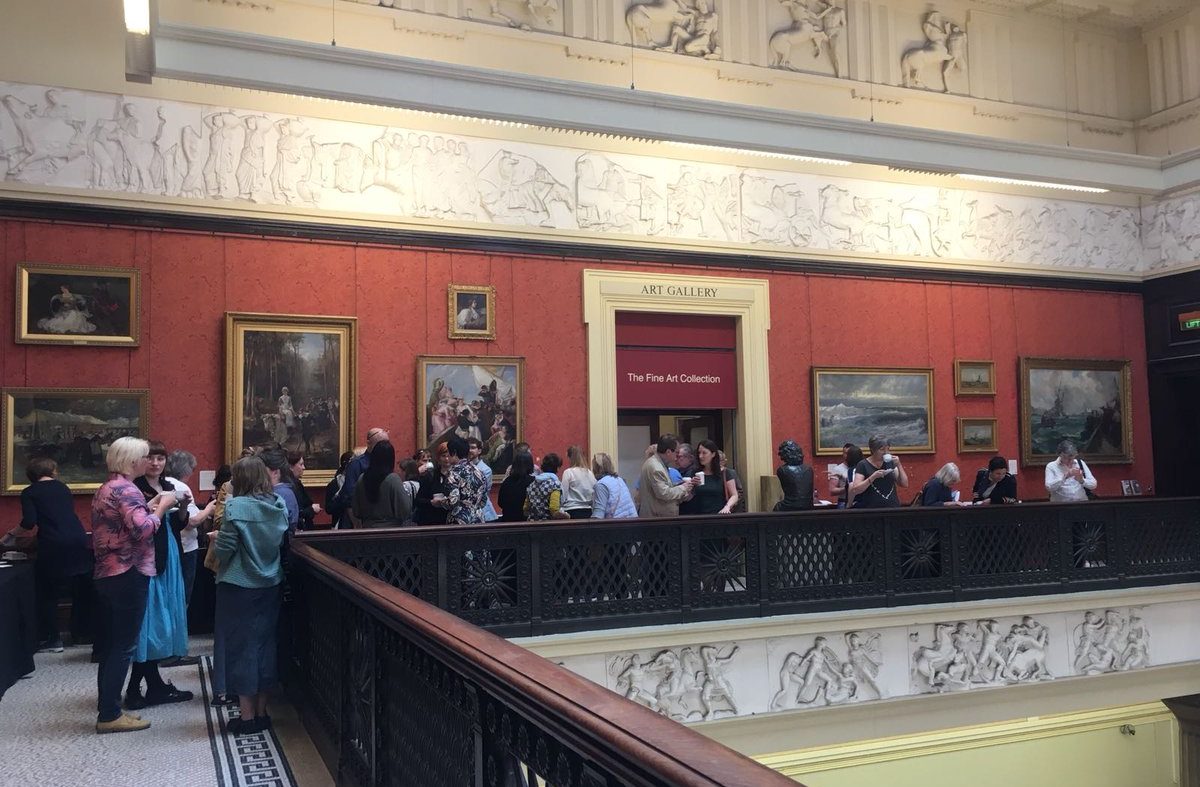
Heather and I spoke first our joint approach to the project and each with our own perspective, as we also do in our published book on the project. With the nerves out the way, I was able to enjoy the talks for the rest of the day and was bowled away by the immense talent of the seven women artists, who will interpret Gywneth’s archive. I believe all the talks will be released soon via the events web-site, so I won’t try to summarise the artists work myself. Suffice to say I feel very lucky that these print-makers have taken such an interest in Gwyneth’s story.
We approached the archive with a documentary lense, whilst I acknowledged during the course of the project our own inevitable subjectivity. For this new exciting project, interpretation can run rife and can tell a story that is intertwined with histories of women underrepresented, women representing themselves with great determination and spirit with all the complexity and depth you’d expect of that. And of course Gywneths’ little old press, dertmermindly still spinning, clanking and inking reamins part of the story.
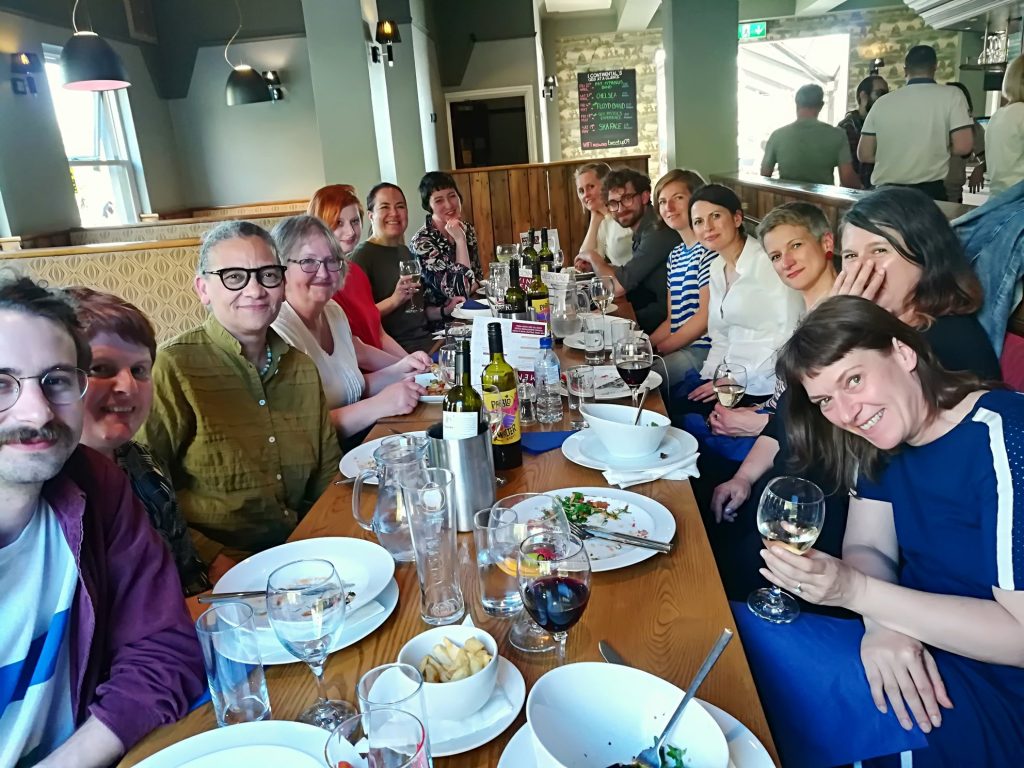
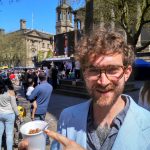
As for Typooo North and our future, we still want to tell Gwyneth’s story. We still want people to have a chance to experience Gwyneth’s work, so If you’d like to exhibit it somewhere please get in touch. We have a set of 59 prints, which are roughly A5 size, along with the book we published and plenty of ‘making-of’ photos. Besides that, watch this space for news on the international women’s collaboration.